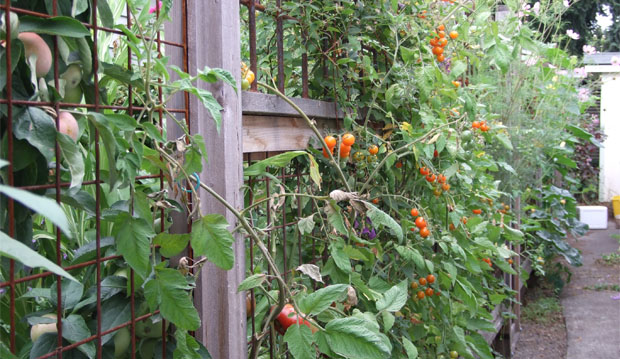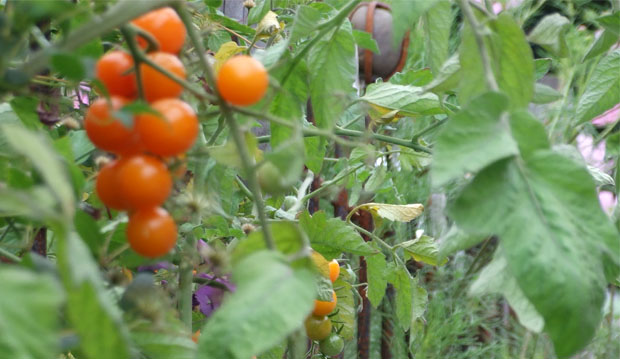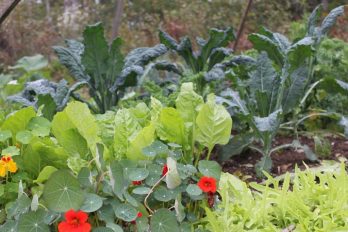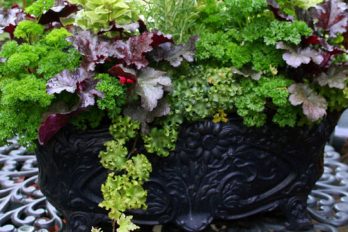If your garden is a postage stamp, Ken Brown shows you how to grow up and feed your family garden-fresh vegetables.
There’s lots of room in even the tiniest garden to grow an amazing amount of vegetables. Growing vegetables vertically is the answer. Brussels sprouts are the simplest; they grow on their own vertical stem with no guidance at all. Just tuck the little plants into the ground in early spring and then break the delicious sprouts off after the first fall frost.
Many other vegetables can be encouraged to grow vertically. Everybody’s favourite, tomatoes, are a good example. Simply stake each plant or, for a sky-high tomato garden, build and sink a T-shaped wooden structure into the ground using a 2.4-metre- (eight-foot) long central post with a 2.4-metre (eight-foot) crosspiece at the top, which extends equally on either side of the post. Hang lengths of nylon cord, about .5-centimetre (one-quarter-inch) thick, from the arms, spacing them every 30 centimetres (12 inches); nylon is preferable to other materials because it sheds water well. Finally, loosely tie the ropes around the base of the plants below. Choose indeterminate varieties of tomatoes because they continue to grow and set fruit all season. Each week over the summer prune them to a single stem by pinching out the side shoots. As the stem grows, twine it around the rope. By late summer you’ll have a tomato garden that’s 2.25-metres (7.5-feet) high!
Another easy vertically-inclined vegetable is beans. Forget about growing the back-breaking, space-consuming bush beans. Instead, search the seed catalogues for the many interesting varieties of pole beans. At the base of a tall trellis or obelisk, plant beans together with morning glory seeds. By midsummer you’ll boast the prettiest prolific bean patch in the neighbourhood. In the fall, if you cannot eat all the beans fresh, just let them dry on the vines and harvest them to make baked beans.
Ken Brown is a garden writer and TBG instructor. For more innovative ways to grow vegetables vertically, sign up for his course, Getting Started: Spring Crops & Veggie Garden Designs, on April 17 and visit gardening-enjoyed.com.





